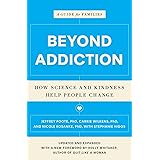Have you ever pondered the perplexing paradox of tobacco consumption? The video above concisely explains some fundamental reasons why individuals continue to use products like tambaku and gutka, even when fully aware of the dire health consequences. It highlights the potent chemical mechanism at play, transforming conscious choices into deeply ingrained habits that are incredibly challenging to break.
This widespread issue, known as **tobacco addiction**, extends far beyond simple willpower. It’s a complex interplay of neurobiology, psychology, and societal factors. Understanding these underlying mechanisms is the first crucial step toward effective cessation and achieving a healthier life free from tobacco’s grip.
The Deceptive Allure of Nicotine: Why We Get Hooked
The core of tobacco’s addictive power lies in nicotine, a naturally occurring chemical found in tobacco leaves. Once consumed, nicotine rapidly enters the bloodstream and travels to the brain, where it acts as a stimulant. The video accurately points out nicotine’s swift journey into the brain. It triggers the release of dopamine, often dubbed the brain’s “feel-good” hormone.
Dopamine plays a central role in the brain’s reward system. When released, it produces feelings of pleasure, excitement, and well-being. This immediate gratification creates a strong positive association with tobacco use. The brain quickly learns to crave this dopamine rush. This process forms a powerful loop, reinforcing the behavior with each use and making tobacco addiction a formidable challenge.
Beyond the Chemical: Psychological and Social Factors
While nicotine’s neurobiological effects are paramount, other factors contribute to the persistent nature of tobacco use. The video touches on several, which deserve deeper exploration:
-
Perceived Stress Relief: Many users believe tobacco helps reduce stress or anxiety. This isn’t because tobacco genuinely alleviates stress long-term, but rather because it temporarily relieves nicotine withdrawal symptoms. The ‘calm’ feeling is often just the brain getting its next dose of dopamine, ending the discomfort of craving.
-
Low Cost and Accessibility: In many regions, tobacco products are relatively inexpensive and widely available. This ease of access removes a significant barrier to consumption, making it harder for individuals to avoid temptation.
-
Social and Cultural Influences: Celebrity endorsements, as mentioned in the video, can play a powerful role in normalizing tobacco use. Beyond that, peer pressure, family habits, and cultural rituals can all contribute to initiation and continued use. The social aspect of sharing tobacco can be a strong reinforcing factor.
The Struggle to Quit: Understanding Withdrawal Symptoms
The video highlights a stark reality: 88% of individuals who try to quit tobacco find it incredibly difficult. This isn’t a lack of desire or willpower; it’s a direct consequence of the body’s dependence on nicotine. When a person attempts to stop, the brain, accustomed to its regular dopamine supply, reacts strongly to its absence. This leads to a range of uncomfortable withdrawal symptoms.
These symptoms, as noted in the transcript, often include headaches, increased depression, and heightened stress. However, the spectrum of withdrawal can be much broader. Users might also experience:
-
Intense cravings for nicotine
-
Irritability, frustration, or anger
-
Anxiety and restlessness
-
Difficulty concentrating
-
Increased appetite and weight gain
-
Insomnia or disturbed sleep
These physical and psychological discomforts are potent deterrents to quitting, often leading individuals back to tobacco for temporary relief. It’s a cruel cycle where the ‘solution’ to the pain is the very substance causing it.
The Heavy Price of Tobacco: Health and Financial Burdens
The health risks associated with tobacco use are well-documented and devastating. As the video states, users are aware of the dangers like cancer and heart attacks. Yet, the immediate dopamine rush often overrides the distant threat. However, the long-term consequences are inescapable and profoundly impact quality of life.
Tobacco use is the leading preventable cause of death globally. It contributes to numerous forms of cancer, including lung, mouth, throat, esophagus, and bladder cancer. Cardiovascular diseases, such as heart attacks and strokes, are also strongly linked to tobacco. Chronic respiratory conditions like emphysema and bronchitis, which severely impair breathing, are common among long-term users. The financial toll is equally staggering, with hospital expenses easily escalating into the lakhs, burdening individuals and healthcare systems alike.
Pathways to Freedom: Effective Cessation Strategies
Despite the formidable nature of tobacco addiction, quitting is absolutely possible. The video offers a glimmer of hope by mentioning the WHO-approved 2mg nicotine gum as a solution. This is an excellent example of Nicotine Replacement Therapy (NRT), a cornerstone of modern cessation efforts.
Understanding Nicotine Replacement Therapy (NRT)
NRTs work by supplying nicotine to the body without the harmful chemicals found in tobacco. This helps alleviate withdrawal symptoms and cravings, making the quitting process more manageable. The idea is to slowly reduce the nicotine dosage over time, allowing the body to gradually adjust. Common forms of NRT include:
-
Nicotine Gums: Like the 2mg gum mentioned, these provide a quick dose of nicotine to combat sudden cravings.
-
Nicotine Patches: These deliver a steady, controlled dose of nicotine throughout the day, helping to manage baseline cravings.
-
Nicotine Lozenges: Similar to gum, these dissolve in the mouth to release nicotine.
-
Nicotine Inhalers/Nasal Sprays: These deliver nicotine rapidly, mimicking the quick rush from smoking, but without the combustion products.
NRTs are proven to significantly increase the chances of successfully quitting tobacco. They help individuals manage the physical aspects of addiction while they develop coping strategies for the psychological and behavioral triggers.
Beyond NRT: A Holistic Approach to Quitting Tobacco
While NRT is highly effective, a comprehensive approach often yields the best results. This can include:
-
Behavioral Counseling: Working with a therapist or counselor can help identify triggers, develop coping mechanisms, and address the psychological aspects of addiction.
-
Medications: Prescription medications, such as varenicline (Chantix) or bupropion (Zyban), can also help reduce cravings and withdrawal symptoms by affecting brain chemistry in different ways than nicotine.
-
Support Systems: Engaging with support groups, family, and friends can provide encouragement and accountability during the quitting journey.
-
Lifestyle Changes: Adopting healthy habits like exercise, balanced nutrition, and stress-reduction techniques (e.g., meditation) can significantly aid recovery and promote overall well-being.
Quitting tobacco is a journey, not a single event. It often involves multiple attempts and requires patience and persistence. Combining various strategies can significantly boost success rates. Recognizing that tobacco addiction is a medical condition, not a moral failing, empowers individuals to seek the support and resources they need. Taking that crucial step towards freedom from nicotine’s hold is one of the most impactful decisions for long-term health and happiness.











